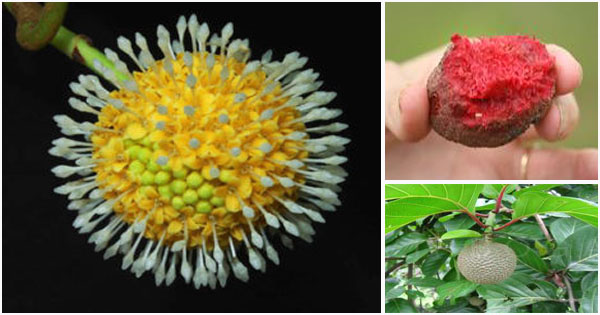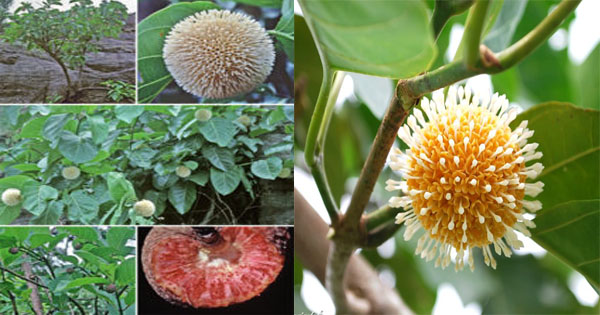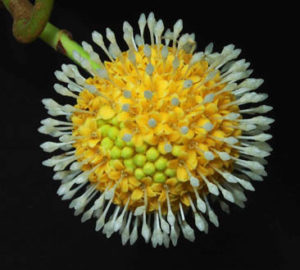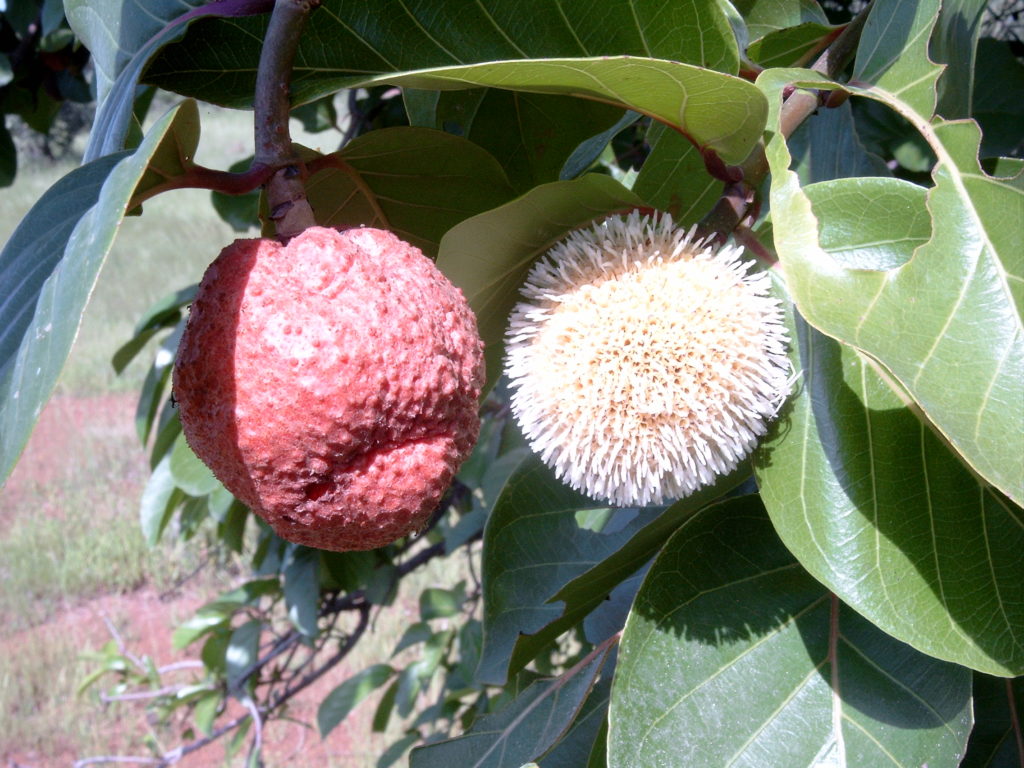
Nauclea latifolia or Sarcocephalus latifolius: a surprising painkiller plant.
Do you know all the virtues of the plant Nauclea Latifolia or Sarcocephalus latifolius? Did you know that this natural plant is very similar to Tramadol? Epilepsy, malaria, various diseases, Nauclea latifolia, now called Sarcocephalus latifolius, is an essential painkiller for the health of humans and animals.
I What is Nauclea latifolia or Sarcocephalus latifolius?
Nauclea latifolia or Sarcocephalus latifolius is a plant or shrub in the Rubiaceae family. It was formerly known as Nauclea latifolia. Today, this plant has been renamed Sarcocephalus latifolius. Nauclea latifolia is mainly found in tropical regions of sub-Saharan Africa.
More specifically, it is found in Senegal, Ivory Coast, Benin, Cameroon, Angola, Congo, Zaire, Central African Republic, Guinea, Gabon, Ghana, Liberia, Mozambique, Togo, Mali, Nigeria, Sierra Leone and Uganda. It is located in tropical forests or savannahs. In Africa, there are more than ten Nauclea or Sarcocephalus latifolius species. Each species has its own particular virtues.
This plant has been used in traditional African medicine for a very long time. African healers used it to treat various diseases of the local population.

Its description
- Nauclea Latifolia or Sarcocephalus Latifolius is a multi-stemmed tree or shrub, ranging from 4-6 cm to 12 metres in height.
- It grows in the tropical savannah, between 0 and 200 metres in altitude. But it can also be found in forest galleries, along waterways.
- Its flowers are small, persistent, fragrant, whitish-yellow, grouped in a cyme-like inflorescence.
- Its fruits are fleshy and edible. They contain calcium, phosphorus, nutrients (A, B1, B2, C, E) and magnesium.
- The optimal climatic conditions are: 27°C average and 2700 mm3 average annual rainfall.
- The period from April to June is the flowering period of the trees.
- From July to December, the flowers begin to ripen.
- The tree should be planted in the light. Extreme shade conditions should be avoided at all costs.
- Its bark is rich in alkaloids.
II The use of Nauclea latifolia (Sarcophelus latifolius) in traditional medicine
All this information is for information purposes only, do not forget to seek medical advice.
In traditional medicine
The roots, bark, leaves, fruits, stems, seeds are frequently used for their therapeutic value. The pain-relieving effects of the plant are used in traditional medicine to treat the local African population. It is an effective painkiller in traditional medicine.
Nauclea leaves have a febrifuge effect. They are used for their laxative, purgative and antiparasitic virtues.
In addition, Nauclea is known for its anti-inflammatory, antibiotic and anti-leprosy properties. For example, the traditional hospital of Keur Masar uses it extensively for its virtues.
Active ingredients include monoterpenes, triterpenes, indole alkaloids and saponins. On the other hand, the roots have antimalarial, analgesic, antibacterial and antifungal properties.
This plant treats several diseases:
In Western medicine
The natural molecule of Nauclea latifolia is identical to the synthetic molecule tramadol. Researchers have noticed that Nauclea latifolia has several painkilling molecules in its roots. Historically, tramadol is a synthetic drug created in the 1970s and marketed in 1977. Its purpose is to relieve pain.

In Western medicine, Nauclea latifolia is used in the treatment of sterility and leprosy.
Its virtues have been confirmed by various studies:
In 2007, a study showed that aqueous extracts of the leaves of Nauclea latifolia (Sarcophelus) have significant antihelminthic activity.
This plant treats nervous system diseases such as epilepsy. Based on studies (Arbonnier 2000, Amos et al. 2005, Ngo Bum et al. 2009, Abbah et al. 2009)
The study by Abbah et al. 2009 showed that the aqueous extract of the plant increased the pain perception threshold in mice. The aqueous extract decreased the pain phases in mice.
The study by Ngo Bah et al. 2009 shows the anti-convulsant, anxiolytic and sedative properties of the plant.
There is the presence of naucleamides A-E in the bark and wood of Naucléa, confirmed in the 2002 Shigemeri et al. study.
It also has anti-hypertensive and laxative activities (Akpanabiantu et al. 2005).
III Les autres formes d’usage du Nauclea latifolia (Sarcophelus latifolius)
a. Fodder for livestock
The leaves and young shoots of Nauclea are harvested. They are used as fodder for livestock.
b. Firewood
The wood of the Nauclea latifolia is used as firewood. It is a very strong wood, resistant to termites.
c. Supporting barrier in farms
The latifolia tree is a real asset on farms. It is used as a barrier or support on farms.
d. Beekeeping
The flowers of the Nucleus are used in beekeeping. They provide nectar and pollen for bees.
e. Dyeing
The barks of the different species of Nauclea produce tannin. Tannin is a kind of dye, which is used in dyeing objects.
f. Soil erosion
Nauclea latifolia or Sarcophelus latifolius is very useful for soil conservation and stabilisation. Indeed, the Nauclea has two qualities. Firstly, it has the ability to provide shade. Secondly, it acts as a windbreak. However, it should not be planted in extreme shade conditions. In addition, the leaves of the Nauclea are sometimes used as mulch.
The roots of Sarcocephalus are used and planted for garden protection.
g. Foodstuff
The fruit of the Nauclea is fleshy and edible. It is eaten when ripe. Also, a non-alcoholic drink is prepared from the fruit of the Nauclea.
Strictosamine alkaloid is obtained from the roots, leaves and bark of the stem.
In Angola, the fruit of the Nauclea latifolia is used as a food supplement.
h. Aphrodisiac
In Congo, the roots of Nauclea latifolia are used as an aphrodisiac.
In Nigeria, the bark of the trunk of Nauclea latifolia is used as an aphrodisiac.
i. A stimulant
In Guinea, Nauclea latifolia is used as a stimulant.
IV Growth sector
With all these pain-relieving effects, Nauclea latifolia or Sarcophelus latifolius can be an area of growth. In Africa, this plant is advantageous because it is 100% natural, has pain-relieving effects and is less expensive. It is a must for the local population.
In Western medicine, it can be very beneficial, as it can be used to treat people suffering from epilepsy and diabetes. Moreover, we are living in a period where people are looking for more organic products, 100% natural. Nauclea latifolia could be of interest to many customers, who would prefer a natural plant to a synthetic medicine.
|
|
In conclusion, Nauclea latifolia or Sarcophelus latifolius is an amazing plant. Its pain-relieving effects are a must for the local population. Do not hesitate to plant Nauclea latifolia, it will bring you all the necessary virtues for both humans and animals.






















